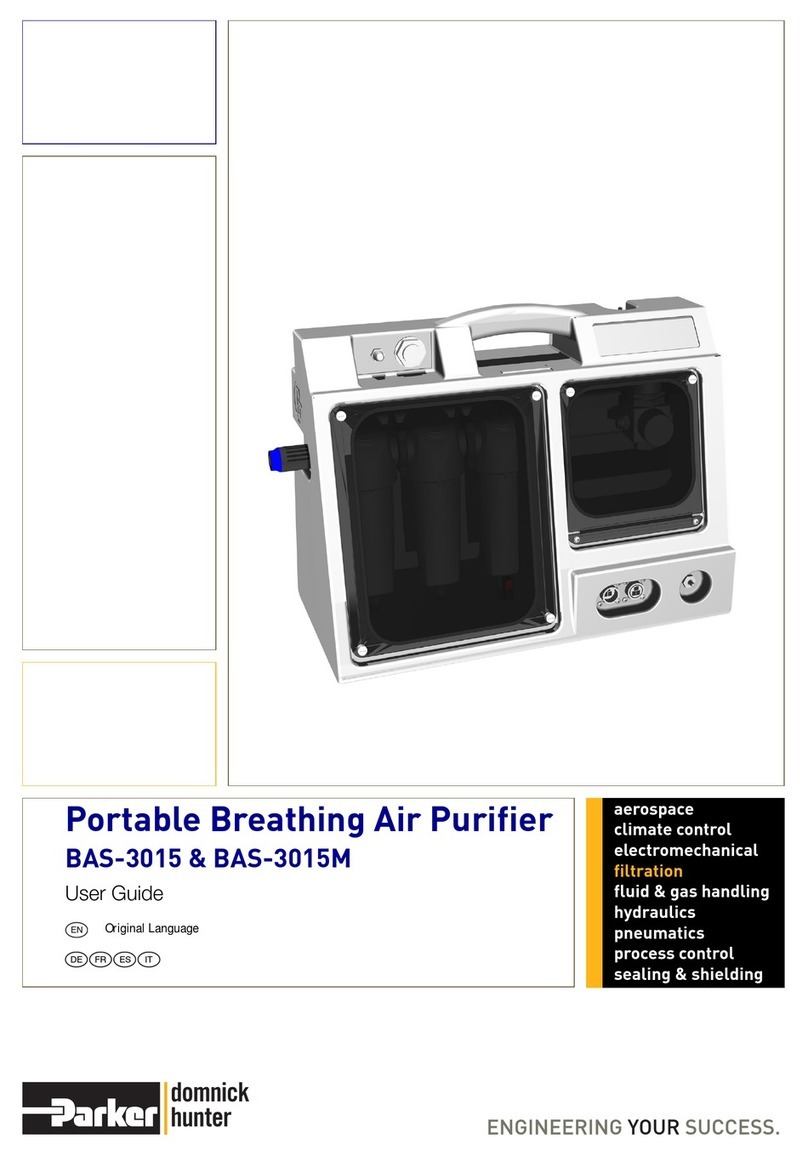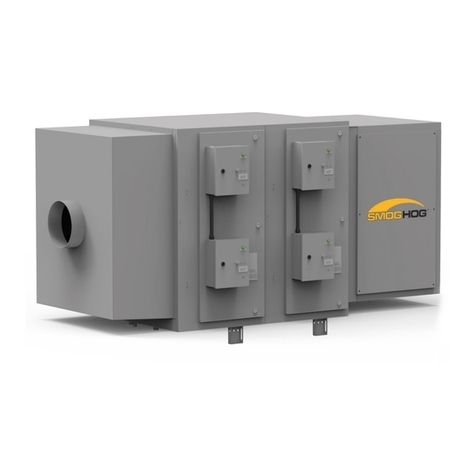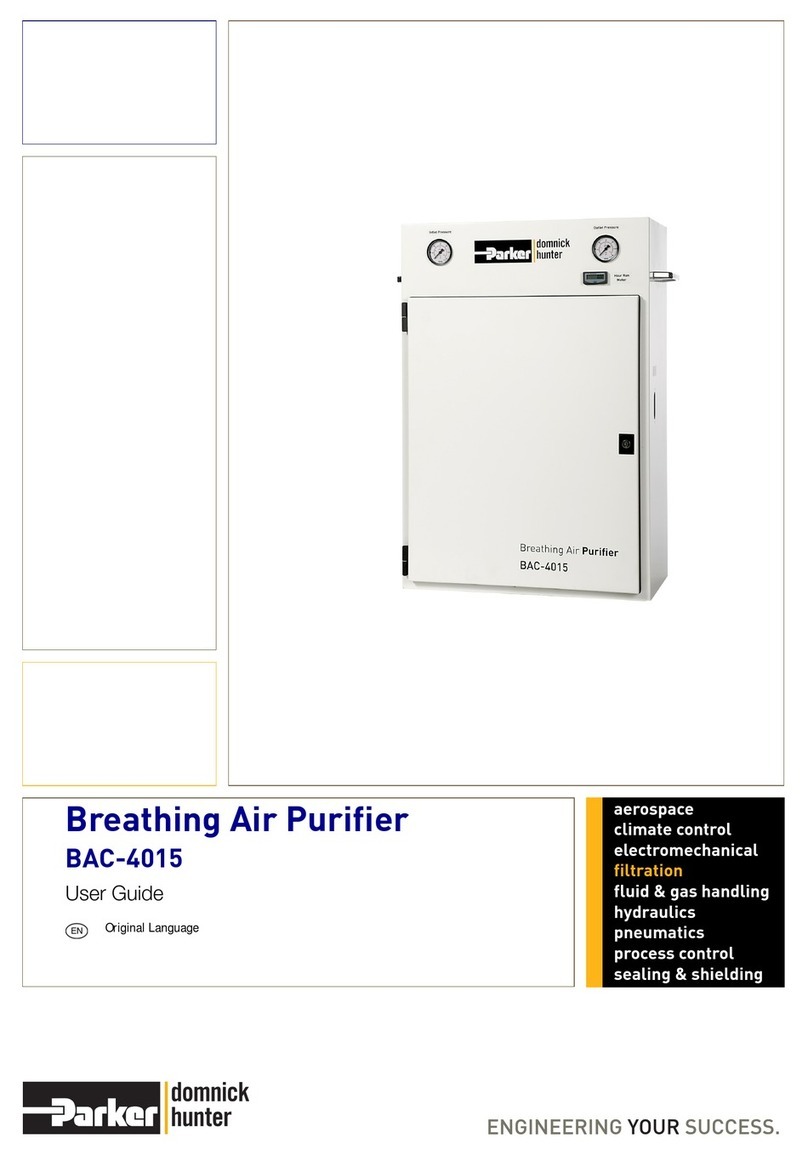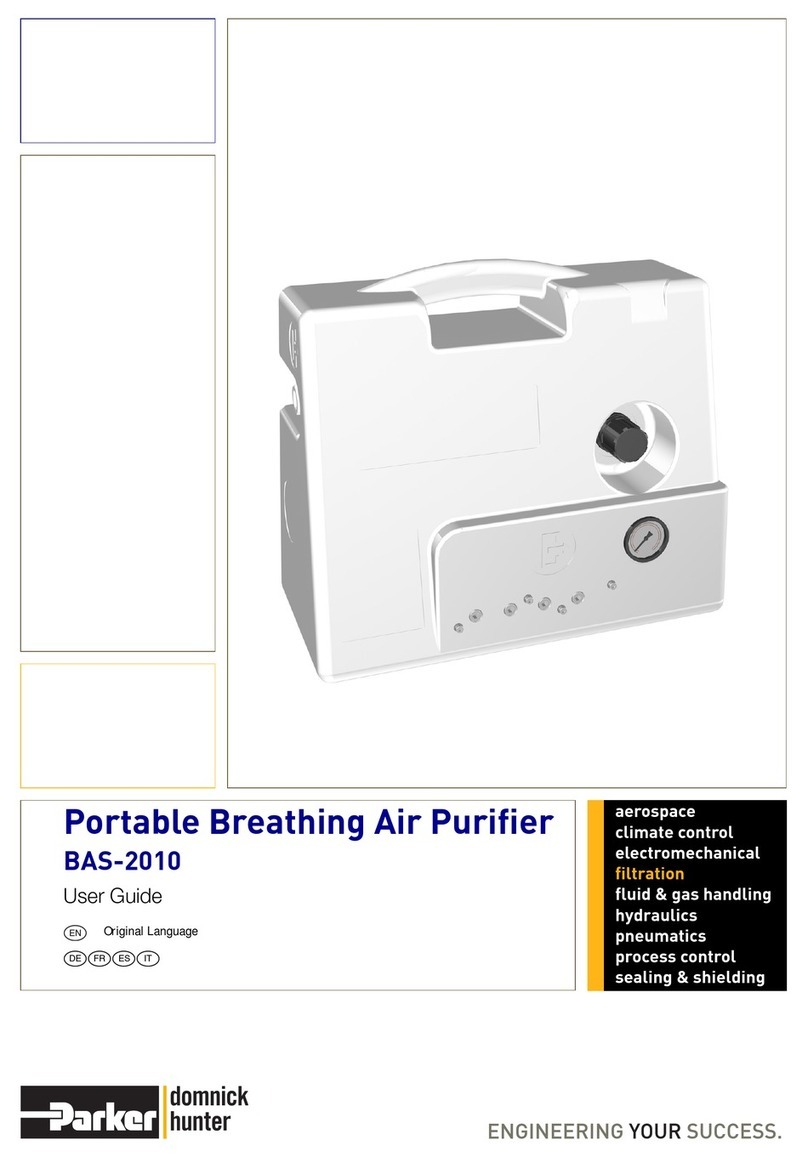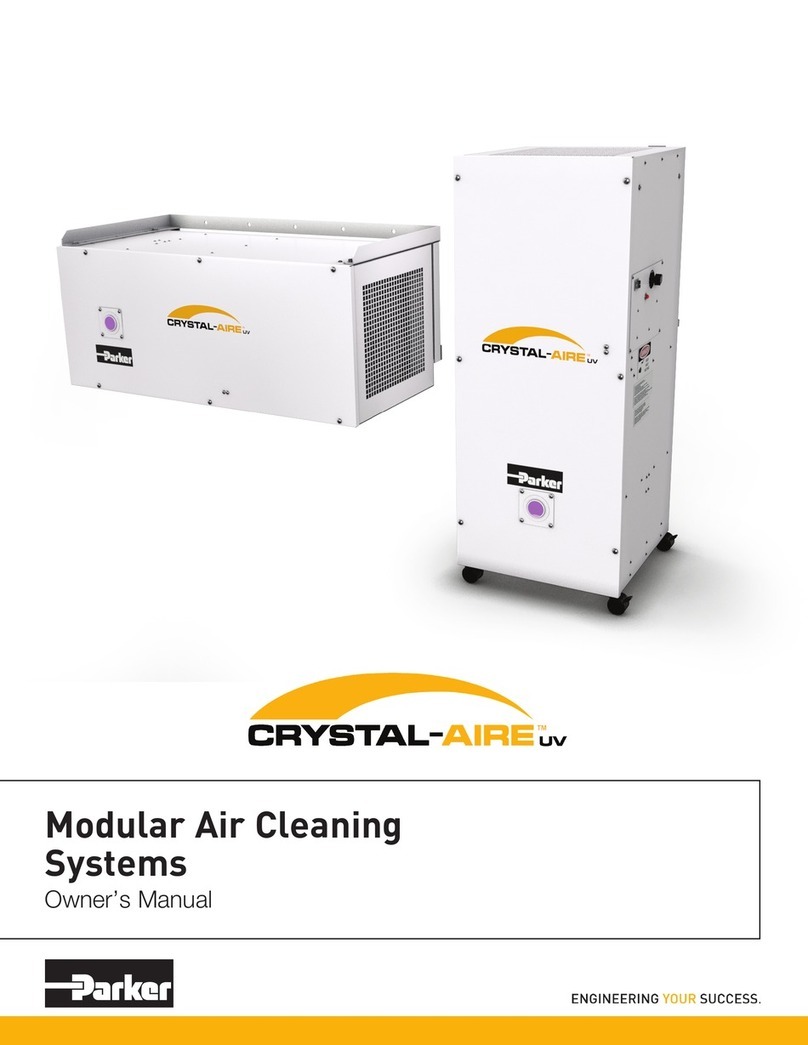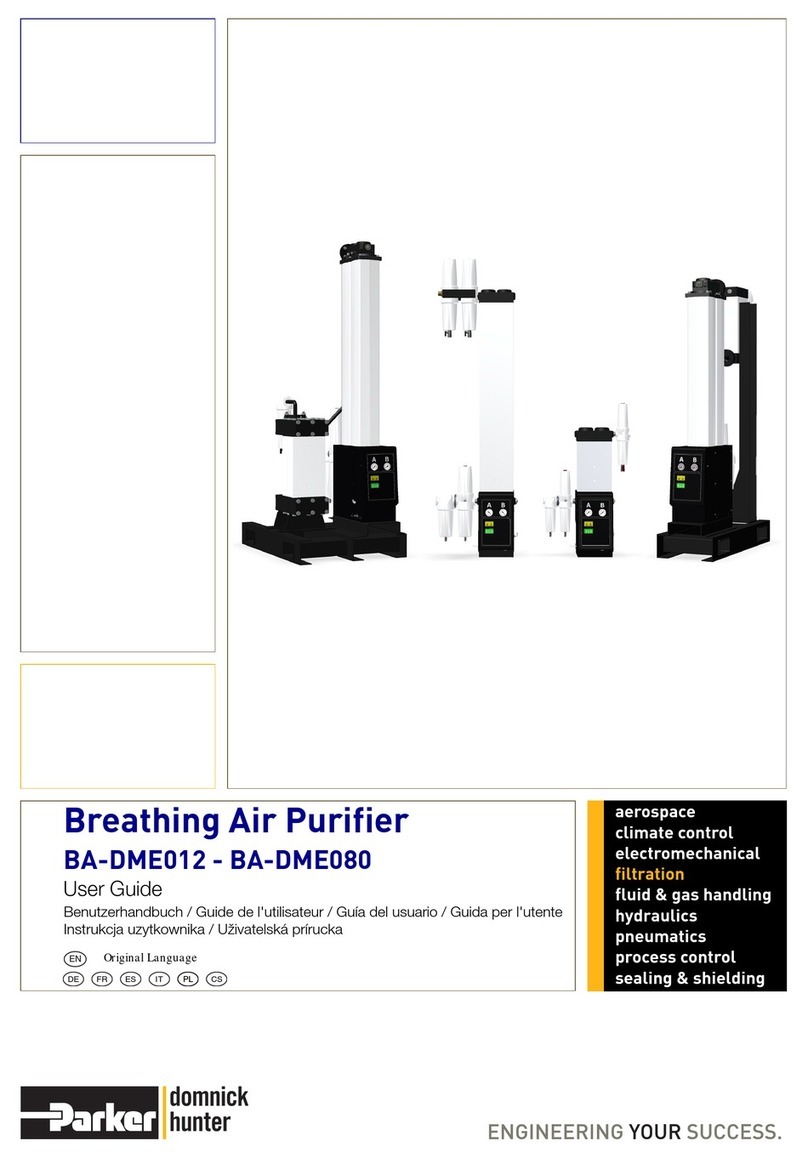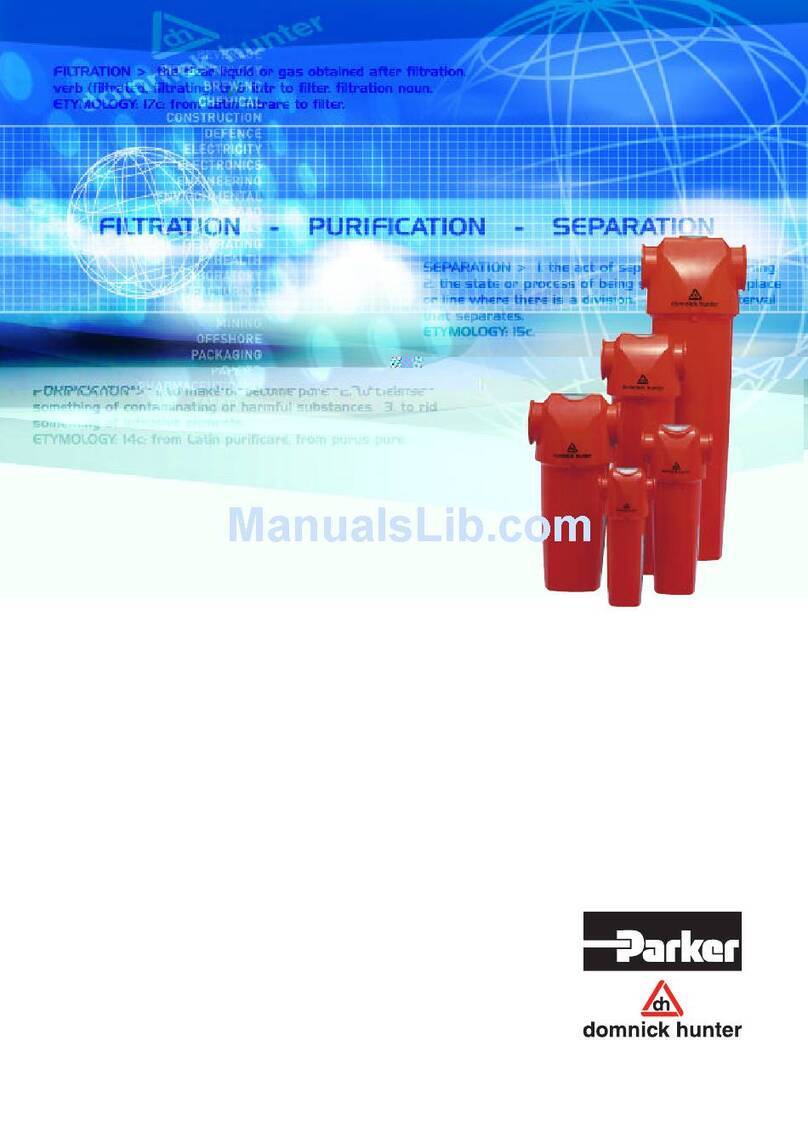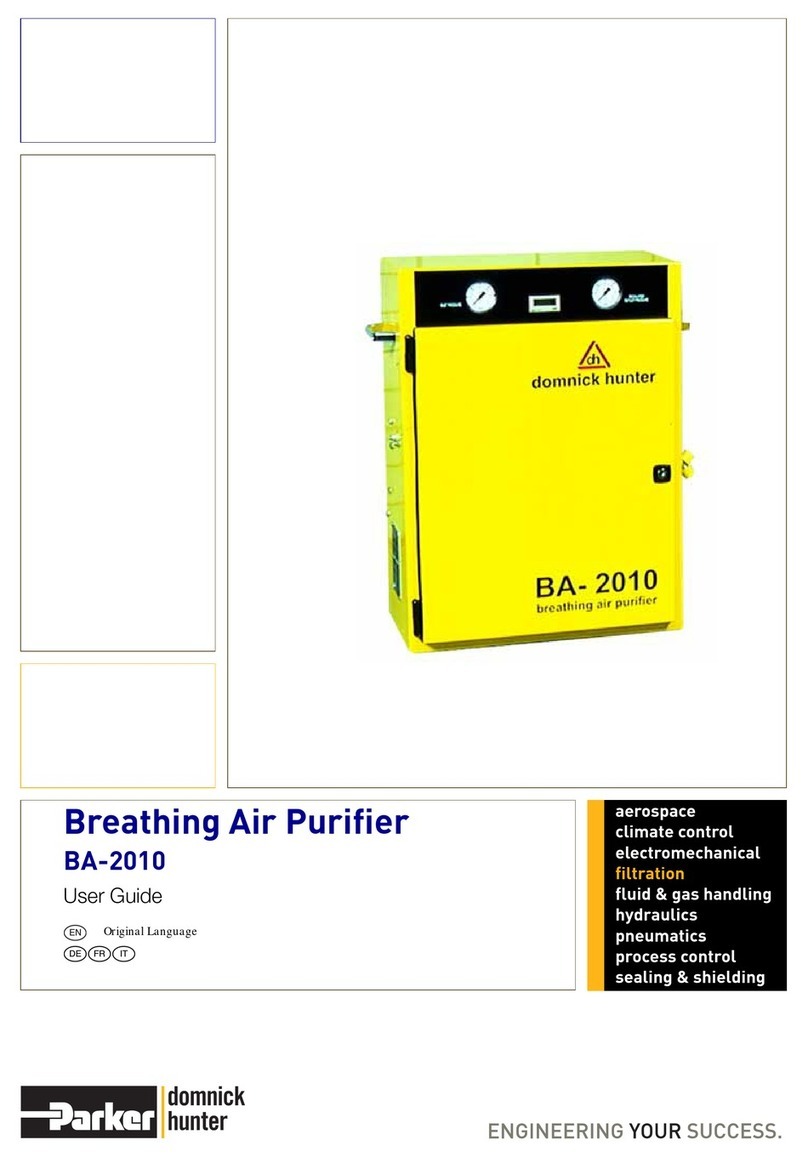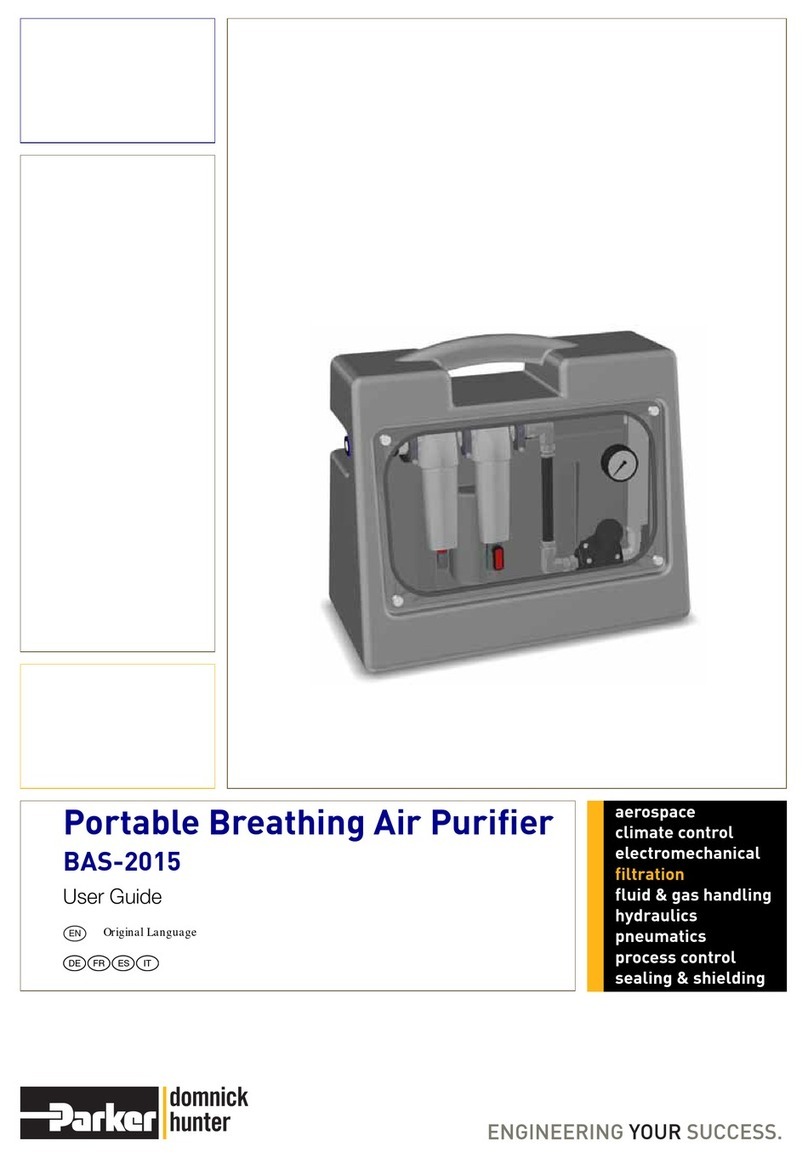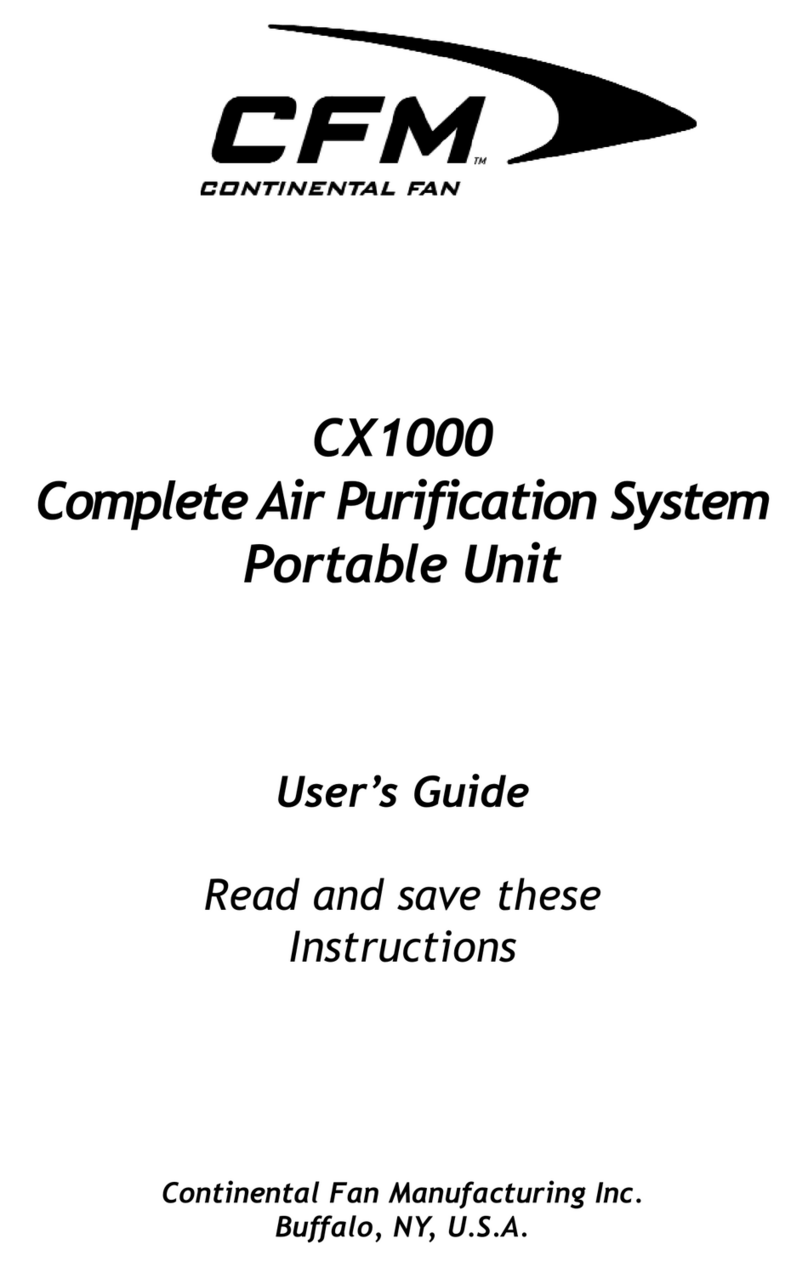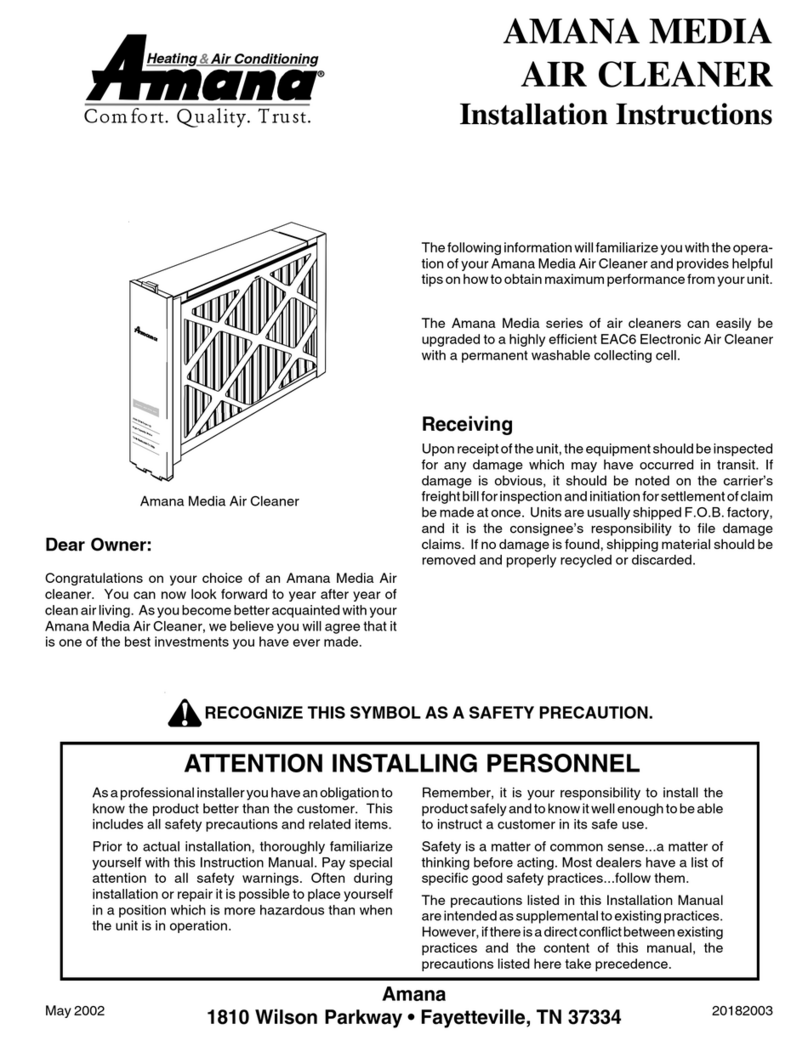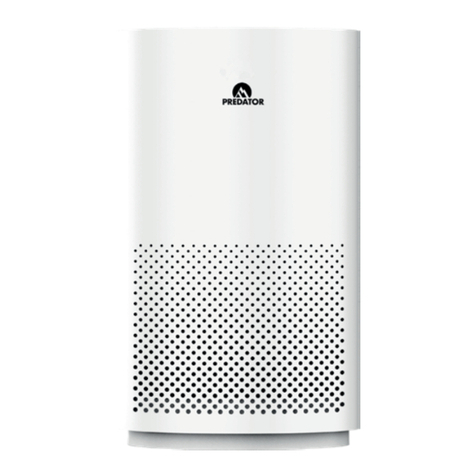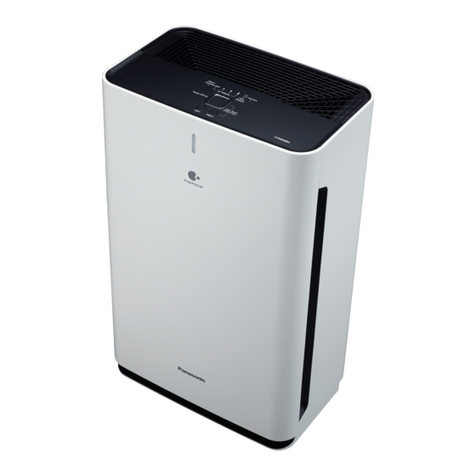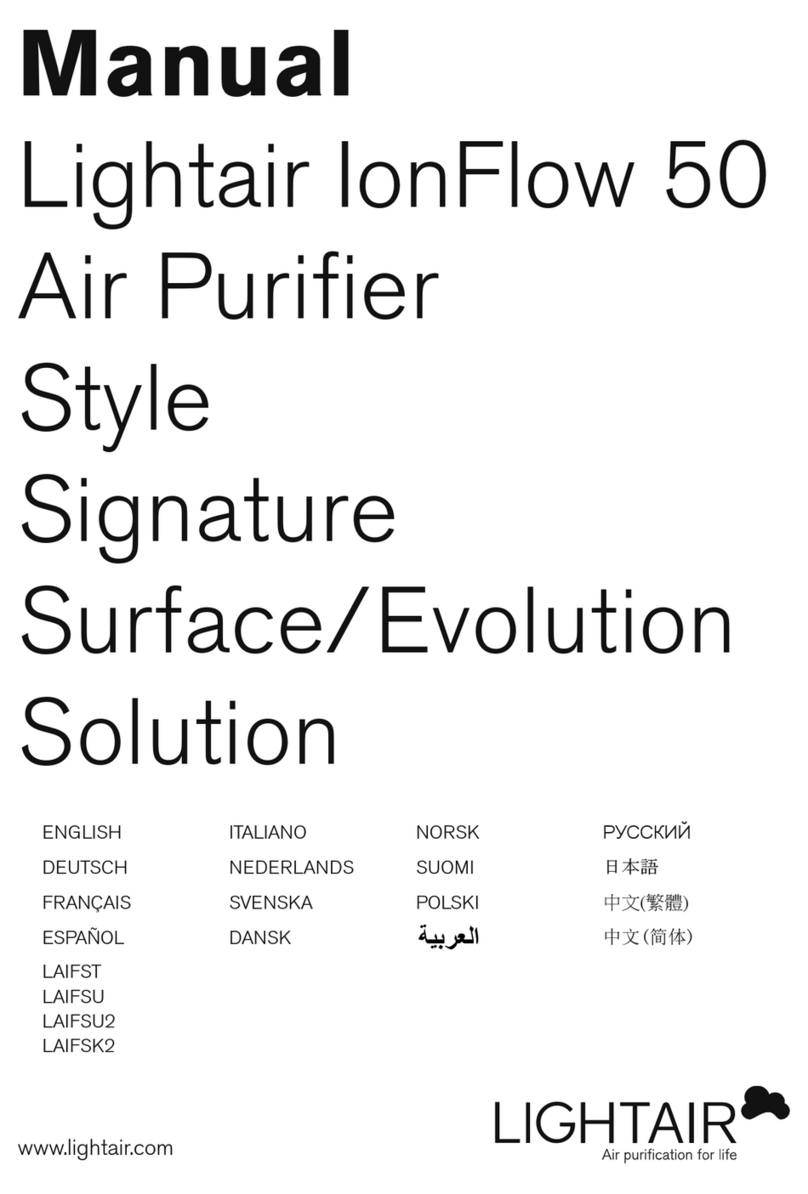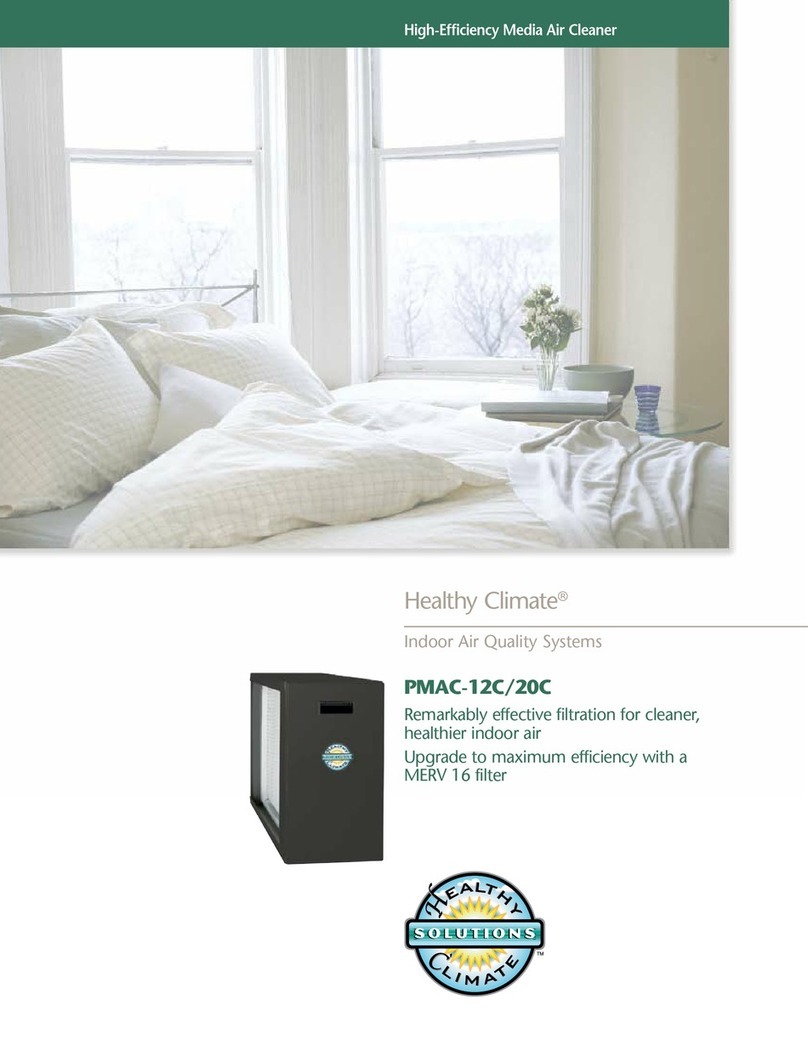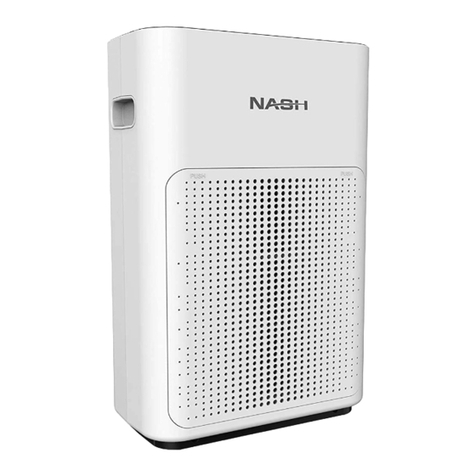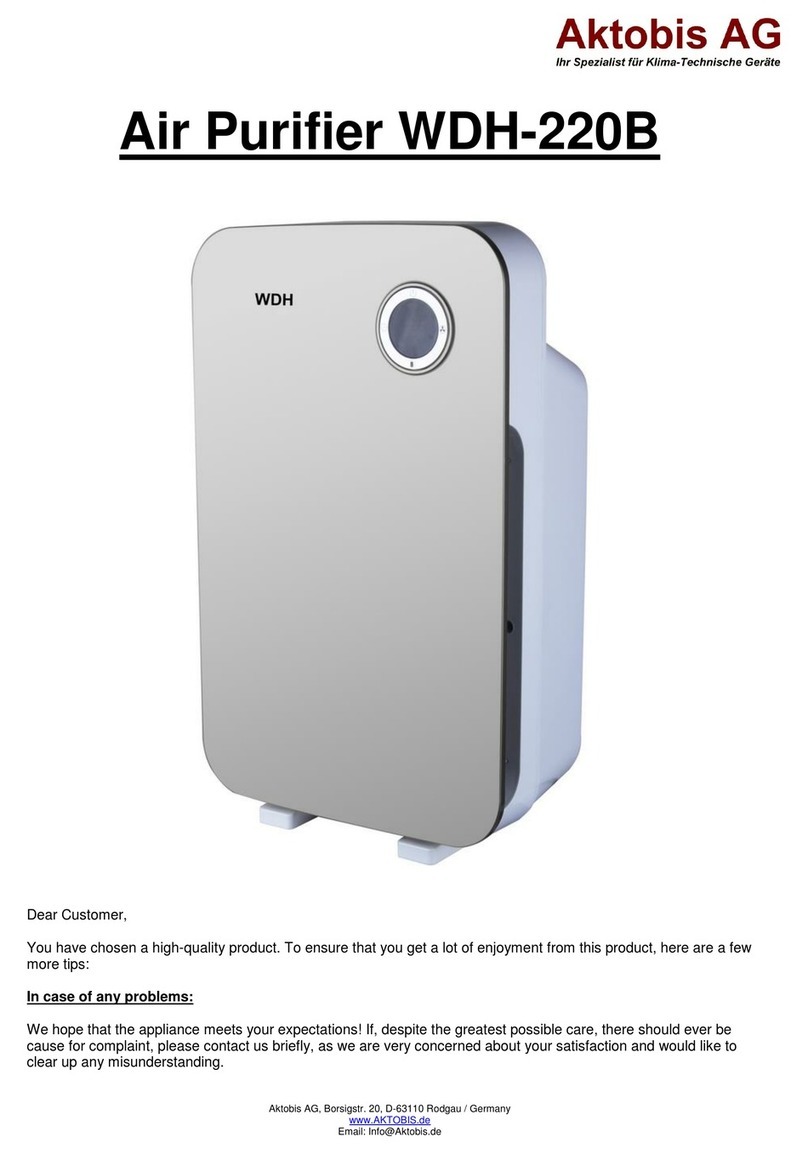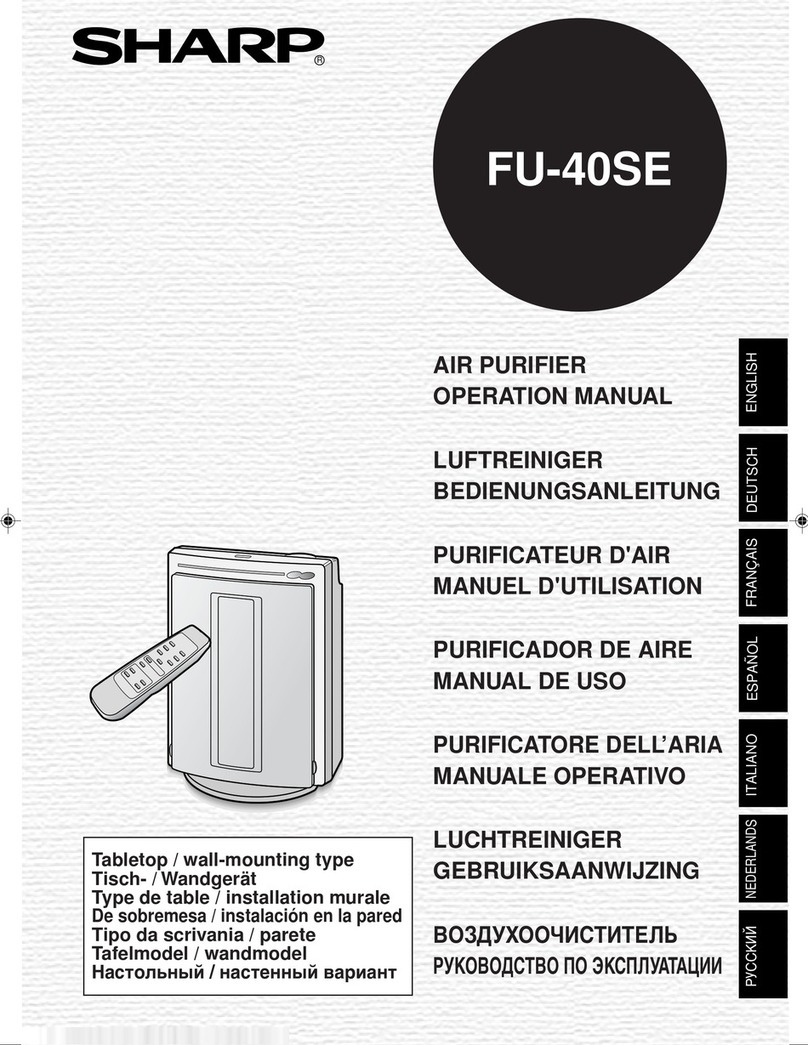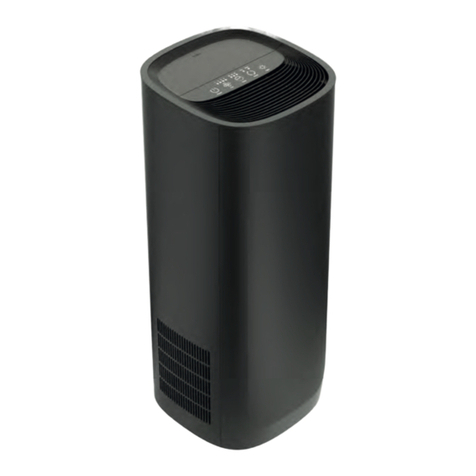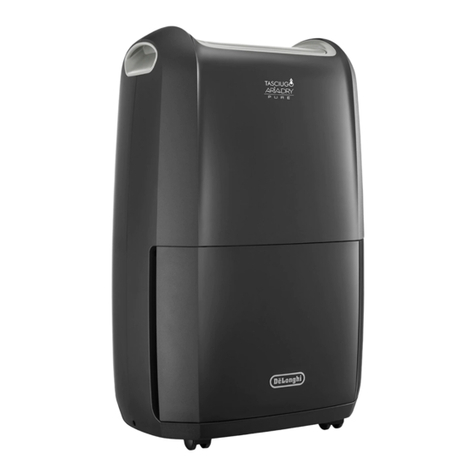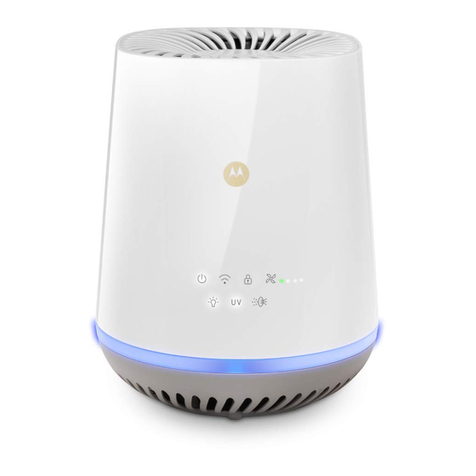
2
3.3 Unit Mounting
Carefully remove the unit from the shipping container, again inspect-
ing for shipping damage. For ease of installation, open the access
door and remove the unicell and filters from the cabinet.
Units are designed for machine mounting. Units may be mounted
onto any flat surface such as a machine tool cabinet top or on an
angle iron support base using the mounting feet on the unit. Ensure
the structure is adequate to safely support the full weight of the
MSH unit.
Prior to installation, verify you have at least 25˝ (635 mm) [Horizontal
Single-Pass, Vertical Single & Tandem Pass] and 40˝ (1016 mm)
[Horizontal Tandem Pass] for door swing and component access on
the door side of the unit. Allow 12˝ (305 mm) clearance from side
obstructions to electrical box where the high voltage power supply
is located. Allow 15˝ (381mm) clearance to the blower access panel
for service.
Drain Connection: MSH unit is equipped with a 11/2˝ NPT drain and
can be supplied with an optional drain loop assembly. (See figure 2)
(horizontal unit only)
To avoid the risk of electrical shock and proper operation of the air
cleaner when making the power connection make certain the air
cleaner is grounded by connecting a good earth ground wire to the
earth ground point in the electrical enclosure.
Installation should conform to all national and local codes.
Refer to Section 9 for your appropriate wire diagram and intercon-
nect. Ensure to take into account all purchased options. These
may include power cord kits, remote on/off, disconnect, and/or
external transformer. Complete the electrical connections to the unit
utilizing the supplied terminal blocks inside the electrical enclosure.
4. Start-Up and Operation
For best results, the unit should be started before the air becomes
contaminated, insuring clean air at all times. The unit has been
thoroughly tested prior to shipment from the factory; however, there
may be some initial arcing of the components at start-up. The arcing
should cease after a few minutes of operation.
An indicator light on the unit is illuminated during normal operation
of the power pack and unicell. If the light fails to illuminate when the
power is turned on, see “Troubleshooting” (section 6.4) for further
instructions. Periodically, momentary shorts will occur indicated by
the flickering indicator light. If the light is dim, fails to glow, or contin-
ues to flicker, the components may need cleaning or servicing (see
“Cleaning Instructions”, Section 5.2 and 5.3).
5. Maintenance and Manual Cleaning
5.1 Normal Maintenance
Once the unit is operational, periodic maintenance is necessary to
assure proper performance. Follow a regular pattern of unit obser-
vation and log abnormal conditions. Since units reflect the process
under control, maintenance patterns will vary accordingly.
Check Power Pack Enclosure Indicator Lights
The MSH should be monitored daily by observing that the indica-
tor light is illuminated to each power pack enclosure. Occasional
arcing (flashing of an indicator light) is normal. An established arc-
ing condition or dead short condition (continuous flashing of an
indicator light) or the indicator light is not illuminated is not normal
should be corrected.
Check Component Appearance Weekly
A visual of the unicell could identify problems such as moderate
to extreme contaminant build up to the unicells even though the
indicator lights are illuminated. This will be helpful in scheduling
a manual cleaning of the components. To check the condition of
the unicells, place the MSH off line. Open the module door and
perform the grounding procedure, refer to Figures 5 and 6, inspect
the condition of the unicells, filters, door feed-thru insulators and
interior of the cabinet. Experience will dictate whether contaminant
build-up is excessive. Contaminant build up will decrease high
voltage to the ionizer and collector cell circuit. When accessing the
module, always clean the two door feed-thru insulators.
The following should be inspected.
Inspect the ionizer section of each unicell, noting the condition of
the contact spring (distorted? bent? missing?), ionizer standoff
insulators (contaminant build up) and ionizer wires (contaminant
build up? missing?), repair or replace. Ionizer wires should be taut
and centered between ground plates. Ground plates between
each ionizer wire should be straight and parallel. Inspect the collec-
tor cell section of each unicell, noting the condition of the contact
spring (distorted? bent? missing?), cell plates (bent? warped?)
should be parallel and straight, repair or replace. Cell hot plates
(smaller dimensional plate) should be centered between ground
plates (larger dimensional plate). Cell plates should not have con-
taminant bridging between the cell plates or at support structure
corners or the triangular insulators. Inspect filters, noting the con-
dition (contaminant build up?, media separation?, bent frames?)
should not have contaminant build up restricting airflow, repair or
replace. Module drain sump should not have moderate to extreme
contaminant build up. Unicell module support tracks should be free
of contaminant build-up for ground contact. Module and access
doors gaskets should be in-place and in good condition.
ELECTRICAL SHOCK HAZARD ELECTRICAL
CONNECTIONS SHOULD ONLY BE MADE BY
QUALIFIED PERSONNEL
!DANGER
DO NOT OPERATE THIS EQUIPMENT IN THE
PRESENCE OF COMBUSTIBLE VAPORS OR
GASES
The MSH unit should be inspected frequently and col-
lected contaminant removed from the system regularly
to prevent excessive accumulation which may result in
a flashover or risk of fire.
!CAUTION
!DANGER


